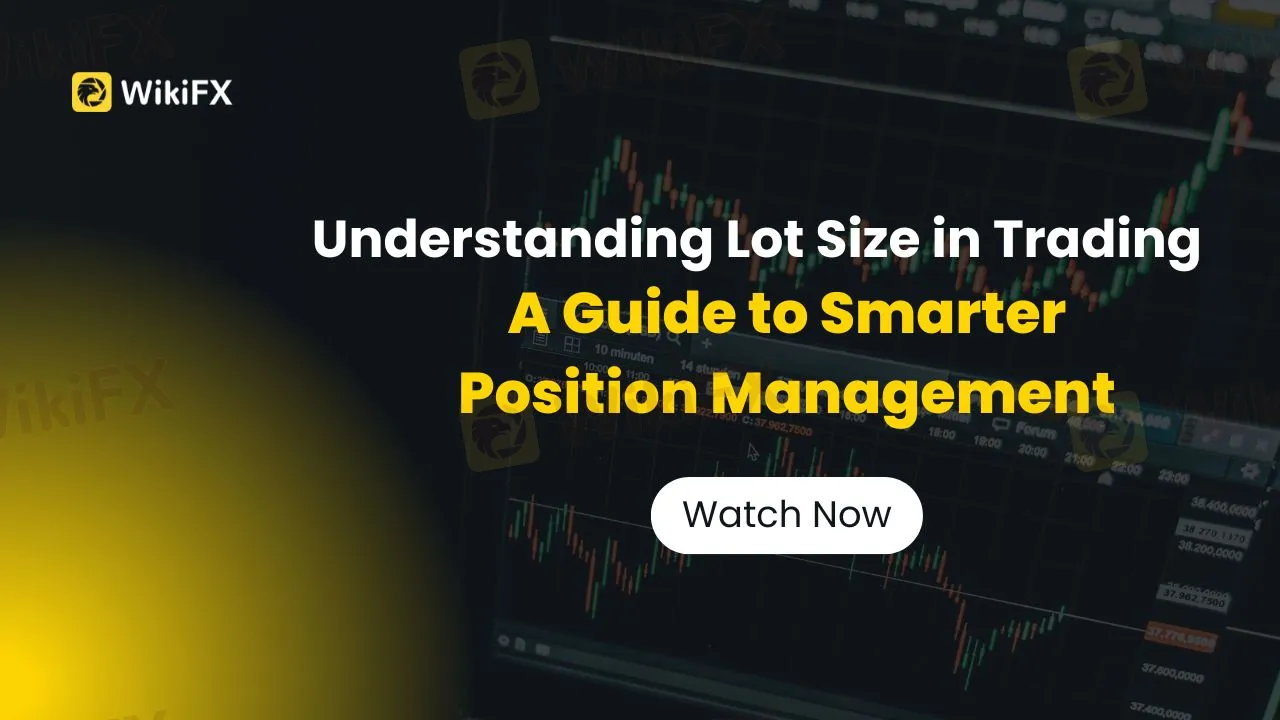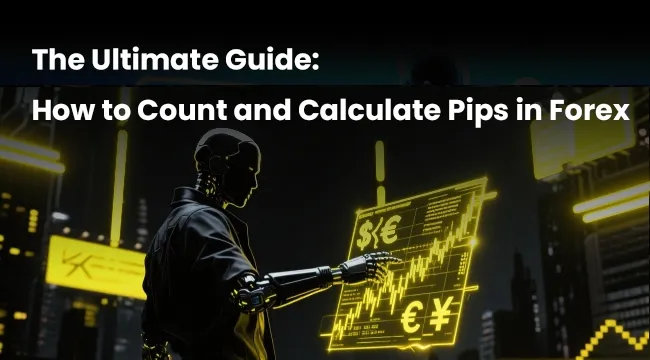Understanding Lot Size in Trading: A Guide to Smarter Position Management
Abstract:Learn how lot size in trading affects your risk, profit, and strategy execution. Discover how to calculate the ideal lot size for your trades with real examples and smart tips.

What does ‘lot size’ actually mean for your trading decisions?
In forex and CFD trading, lot size isn‘t just a technical detail—it’s a fundamental factor that directly impacts your profit potential and risk exposure. Whether youre placing your first trade or optimizing your existing strategy, understanding how to choose the right lot size is key to long-term success.
What Is Lot Size in Trading?
Lot size refers to the number of units of an asset youre buying or selling in a single trade. In forex, for example, one standard lot equals 100,000 units of the base currency. This system helps traders define their position size in a uniform and scalable way. Think of it as the building block of any trade—small changes in lot size can dramatically shift your outcomes.
To give you an idea:
- A standard lot equals 100,000 units.
- A mini lot equals 10,000 units.
- A micro lot equals 1,000 units.
- A nano lot equals 100 units (offered by some brokers).
So if you open a trade with 1 standard lot on EUR/USD, youre essentially trading €100,000 against the USD.
Why Does Lot Size Matter?
Lot size plays a dual role—it affects how much profit you can make and how much you can lose. Every pip movement in the market corresponds to a different dollar amount depending on your lot size.
Let‘s say you’re trading EUR/USD:
- At 1 standard lot, one pip is worth $10.
- At 1 mini lot, one pip is worth $1.
- At 1 micro lot, one pip is worth $0.10.
This means if the market moves against your trade by 50 pips, you could lose $500, $50, or $5 depending on your lot size. That‘s why managing your lot size isn’t about being aggressive—its about being smart.
How Lot Size Relates to Risk Management
One of the most overlooked mistakes in trading is choosing a lot size without calculating the corresponding risk. Ideally, you want to limit each trades potential loss to a certain percentage of your account balance—commonly 1% or 2%.
For example, if your trading account has $5,000 and your maximum risk per trade is 2%, that means youre willing to lose $100 on any single trade. Based on your stop-loss distance (say, 50 pips), you can calculate your lot size precisely to stay within that risk limit.
This is where position sizing calculators come into play. They help you reverse-engineer the correct lot size based on your account size, risk tolerance, and stop-loss distance.
Lot Size and Leverage: A Risky Combo?
Leverage lets you control large positions with a small amount of capital, but when combined with oversized lot sizes, it becomes a double-edged sword. Many retail traders fall into the trap of using high leverage to amplify gains without realizing how fast losses can pile up.
Let‘s say your broker offers 1:100 leverage. With just $1,000, you could theoretically open a trade worth $100,000 (1 standard lot). But that means a 100-pip move against your position could wipe out your entire balance. Sound scary? That’s because it is. Lot size and leverage should always be balanced with tight risk controls.
Choosing the Right Lot Size: Practical Scenarios
Imagine two traders:
- Trader A has a $10,000 account and uses 1% risk per trade with a 50-pip stop-loss. He calculates the right lot size as 0.2 standard lots.
- Trader B has a $1,000 account but opens 1 standard lot on every trade because hes chasing fast profits.
Guess whos more likely to blow their account?
The answer is clear: Trader A may not win every trade, but he‘s protecting his capital with every position. That’s the power of using appropriate lot sizes in tandem with a structured trading plan.
Is There an Ideal Lot Size for Beginners?
If youre just starting out, stick with micro lots or nano lots. They let you trade real markets with minimal exposure, which is perfect for building experience without putting your capital at risk. More importantly, they let you practice risk management, which is the most valuable skill a trader can develop.
As you grow more confident and consistent, you can gradually scale up. But your lot size should never grow faster than your understanding of the market.
Final Thoughts
Lot size in trading is more than just a number—its the bridge between your strategy and your risk profile. Pick a lot size that fits your account size, your goals, and your temperament. Use tools, stay disciplined, and above all, treat every trade as a lesson in risk control.
Lot size wont guarantee success. But mastering it will keep you in the game long enough to get there.
FAQ: Lot Size in Trading
Q: Can I change lot size in the middle of a trade?
No. Once a trade is executed, the lot size is fixed. To increase or decrease exposure, youd need to open or close positions accordingly.
Q: Do all brokers offer nano lots?
Not always. Nano lots are typically available on cent accounts or beginner-friendly platforms. Check your brokers terms before signing up.
Q: How do I calculate pip value based on lot size?
You can use online pip value calculators. Generally, for a standard lot in EUR/USD, 1 pip = $10.
Q: Is using a smaller lot size always safer?
Not necessarily. If your lot size is too small relative to your account, you may not gain enough experience managing meaningful risk. The key is balance, not just safety.
Read more

VCG Markets: An Unknown FX Broker That Deserves a Closer Look! Be Cautious
VCG Markets is not much popular among traders and investors, but it is active in the forex market and can swindle those who are not aware. So this is a broker you need to be cautious about. This broker has several major red flags you need to know about to protect your money. Read this article to know VCG Markets.

Why Are Investors Losing Trust in StoneX? What You Need to Know
StoneX is a FCA-regulated broker, but despite this, investors are losing interest. What are the key reasons behind this shift in investor sentiment?

Checkout List of 7 "FCA WARNED" Unauthorized Brokers
The FCA (Financial Conduct Authority) once again warns forex traders and reveals a new list of unauthorized brokers operating in the forex market without FCA permission. Check the list to stay safe.

The Ultimate Guide: How to Count and Calculate Pips in Forex
Mastering how to count and calculate pips in forex is a rite of passage for every serious trader. It transforms abstract price charts into a concrete language of profit, loss, and risk. We've learned that a pip is the standard unit of price change. But its monetary value is dynamic, depending on the pair, trade size, and your account currency. We've also seen that to find your true profit, you must account for costs like the spread. Even when you use calculators and platform tools for speed, knowing how to calculate pips manually gives you deep, intuitive understanding of your trade mechanics. This skill isn't optional. It's the foundation upon which sound risk management and consistent strategy execution are built. By mastering it, you've taken a major step toward becoming a more competent and confident trader.
WikiFX Broker
Latest News
Pip Value Calculation Guide: How Much Is a Pip in Forex Really Worth?
Spains economy keeps growing — why is the country doing so well?
OctaFX Update: Crypto Deposit Restrictions Raise Regulatory Concerns
Football Meets Finance: PSG Signs Global Partnership With WeTrade
Checkout List of 7 "FCA WARNED" Unauthorized Brokers
Trader’s Way Exposed: Where Winning Trades Turn into Losses Overnight
Activity Upgraded! The 2025 WikiFX “Global Broker Review Contest” Grandly Launches!
Why Are Investors Losing Trust in StoneX? What You Need to Know
UAE Retail Investors Show Strong Preference for Local Stocks Amid Global Tensions
What is Free Margin in Forex - An Insightful Guide You Can’t Miss Out
Rate Calc

